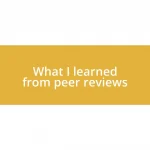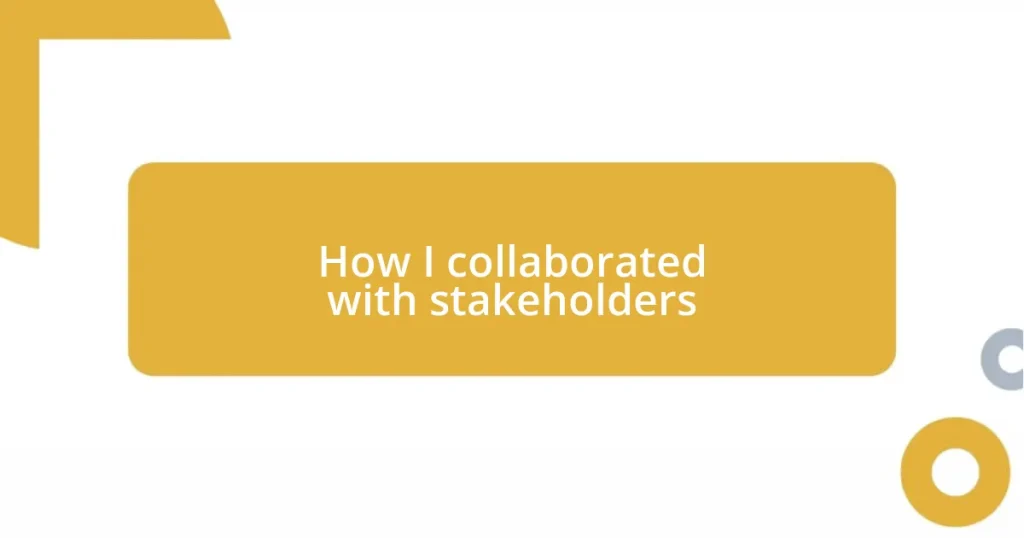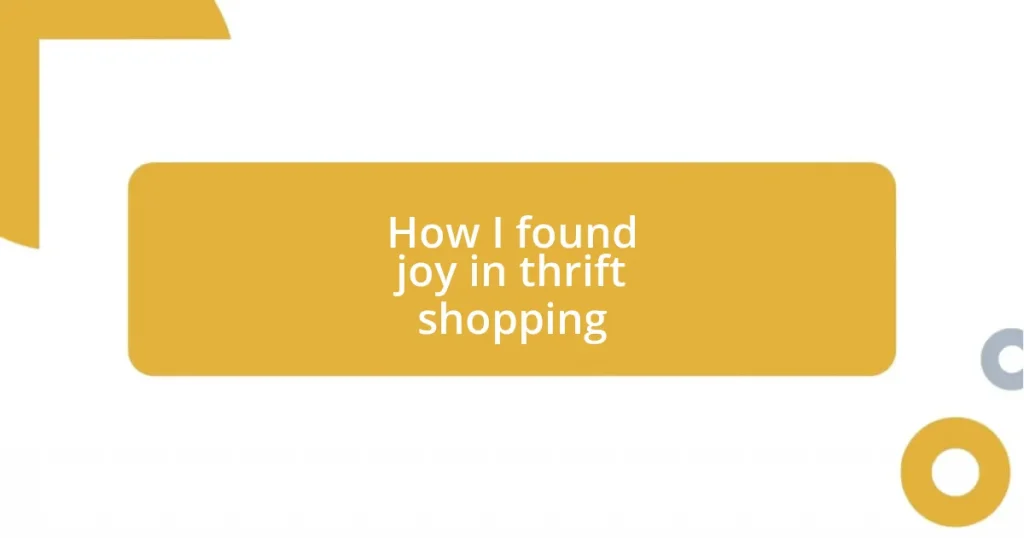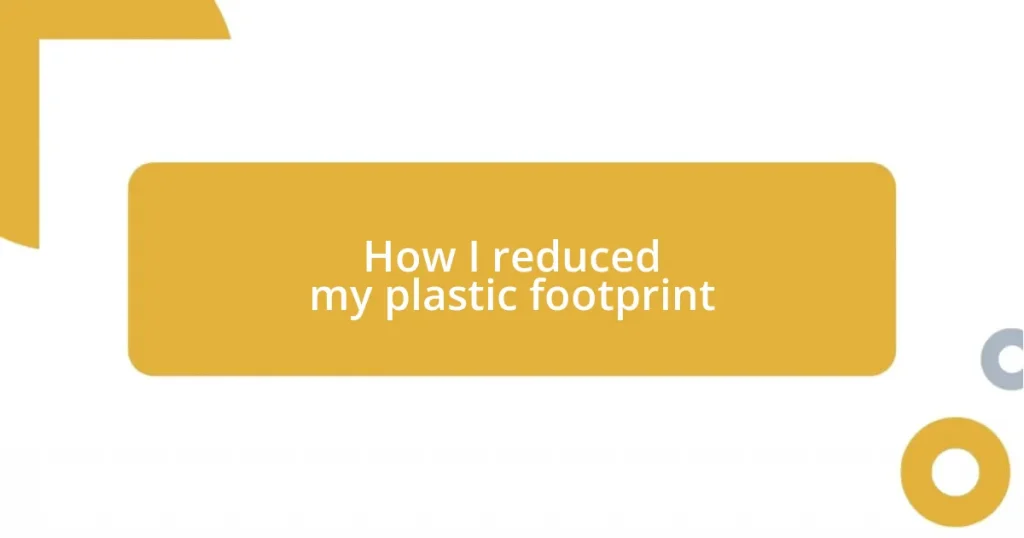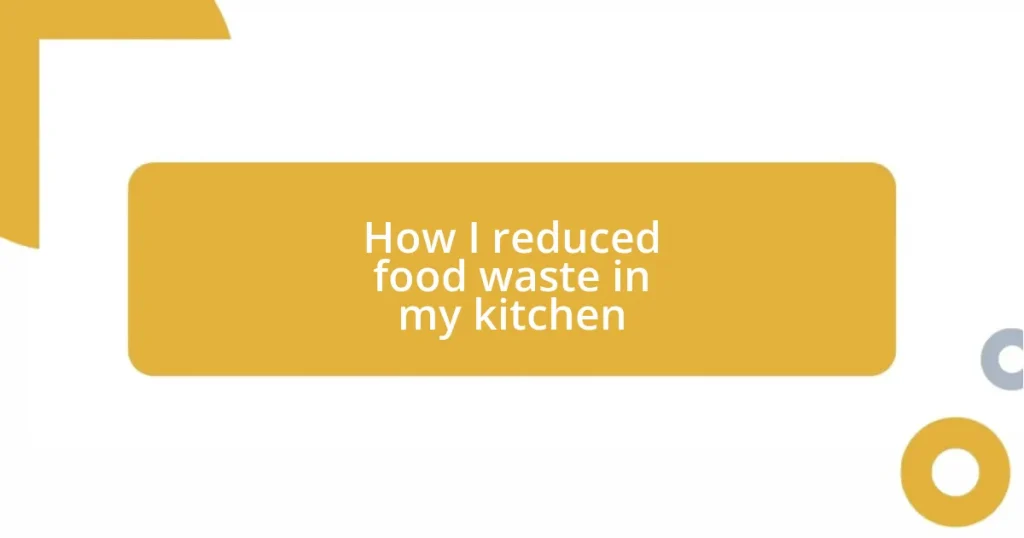Key takeaways:
- Effective stakeholder collaboration requires building meaningful relationships through active listening, transparency, and trust.
- Identifying and categorizing stakeholders based on their influence helps tailor engagement and communication strategies for better project outcomes.
- Building trust is a gradual process that involves consistency, transparency, empathy, and celebrating successes together.
- Evaluating stakeholder feedback leads to continuous improvement, strengthens relationships, and fosters a collaborative spirit.
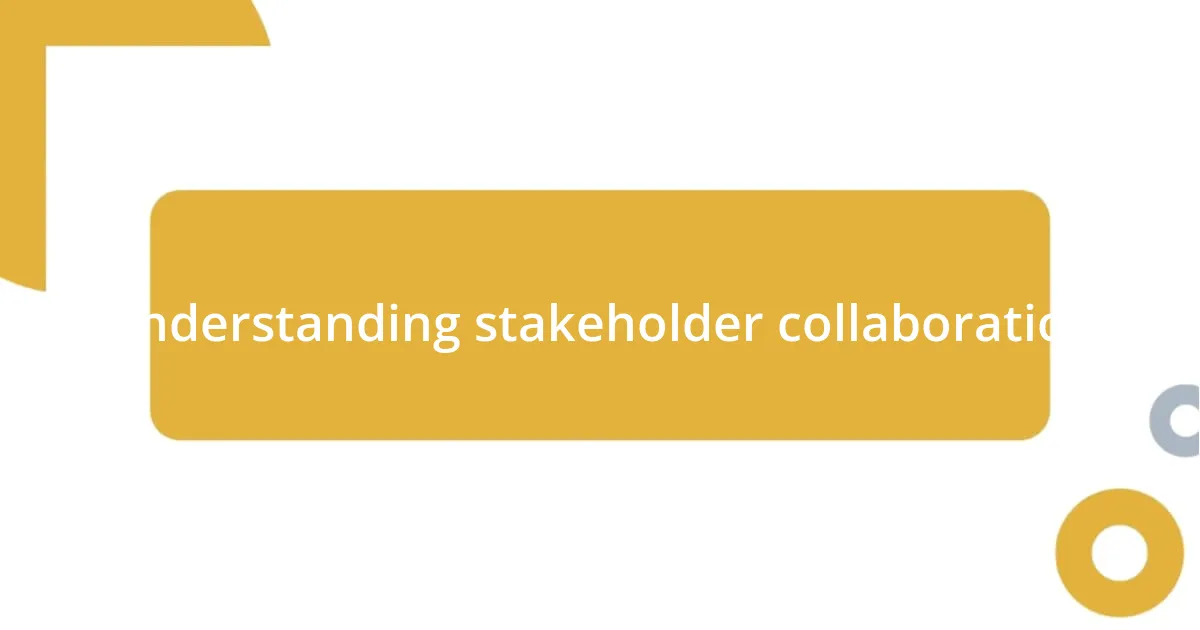
Understanding stakeholder collaboration
Collaboration with stakeholders goes beyond just sharing information; it requires building meaningful relationships. I remember my first major project where I was eager to prove my value. However, I quickly learned that listening to stakeholders was just as crucial as sharing my ideas. It’s essential to understand their perspectives and concerns because that’s where the real insights come from.
In my experience, effective collaboration often hinges on transparency and trust. There was a time when I faced resistance on a project, but by opening up about the challenges and admitting what I didn’t know, I found common ground. Have you ever experienced a breakthrough moment like that? That sincere exchange can transform a contentious atmosphere into one of collaboration.
Moreover, the emotional intelligence to navigate differing viewpoints is vital. I once worked with a stakeholder who had opposing ideas, but instead of viewing their perspective as a barrier, I took it as an opportunity to dive deeper into the project’s nuances. This shift in mindset not only enriched our conversation but also fostered a stronger partnership. Understanding each other’s motivations and fears can pave the way for innovative solutions.
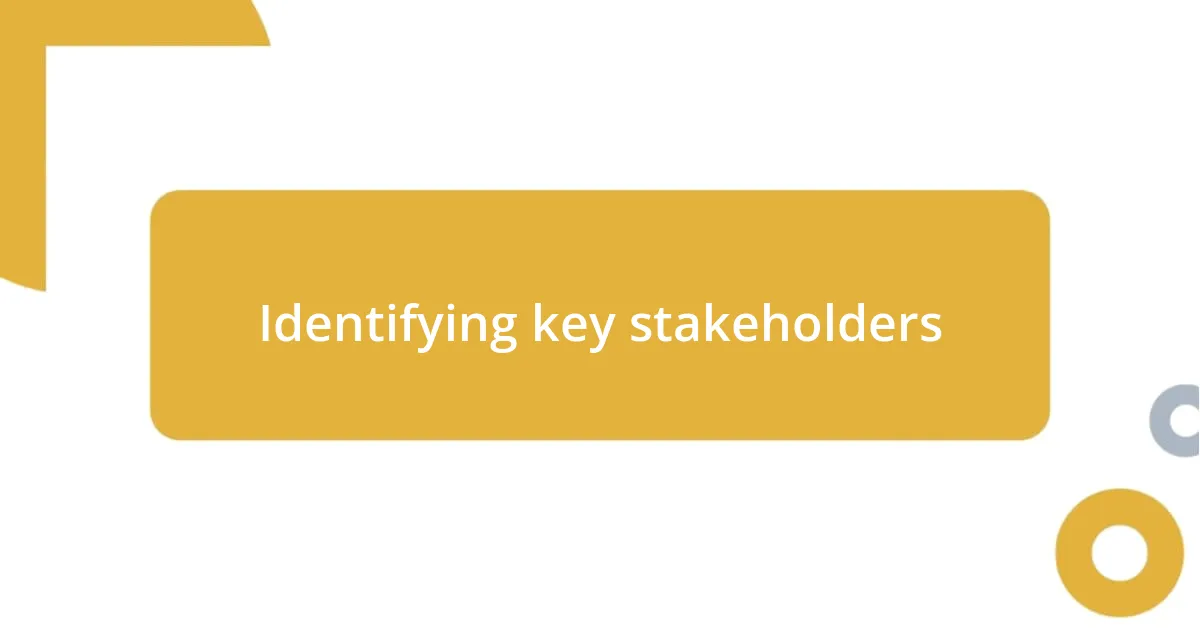
Identifying key stakeholders
Identifying key stakeholders is a critical step in any collaborative project. I remember sifting through a long list of potential stakeholders during a community development project. It felt overwhelming at first, but the key was to focus on those who genuinely had a vested interest in the outcome. By mapping out individuals and groups based on their influence and impact, I could see who needed to be involved most closely.
In my experience, categorizing stakeholders into groups—such as primary, secondary, and tertiary—made the identification process much simpler. Primary stakeholders directly impact the project, while secondary stakeholders have less direct involvement but can still provide valuable insights. Tertiary stakeholders might not be directly affected but can support or hinder your efforts through public perception. This hierarchy helped me prioritize communication efforts and tailor my approach to each group.
Engagement doesn’t stop at identification; it’s an ongoing effort. I once made the mistake of assuming a stakeholder’s influence and importance without proper engagement. After realizing they felt overlooked, I took proactive steps to involve them in discussions. It was enlightening to witness how their unique perspective shifted our project’s direction positively. Building that relationship proved invaluable, highlighting how crucial it is to identify and genuinely involve all key stakeholders from the get-go.
| Stakeholder Type | Definition |
|---|---|
| Primary | Directly affected or involved in the project |
| Secondary | Indirectly affected, providing support or insights |
| Tertiary | Not directly affected, but can influence perceptions |
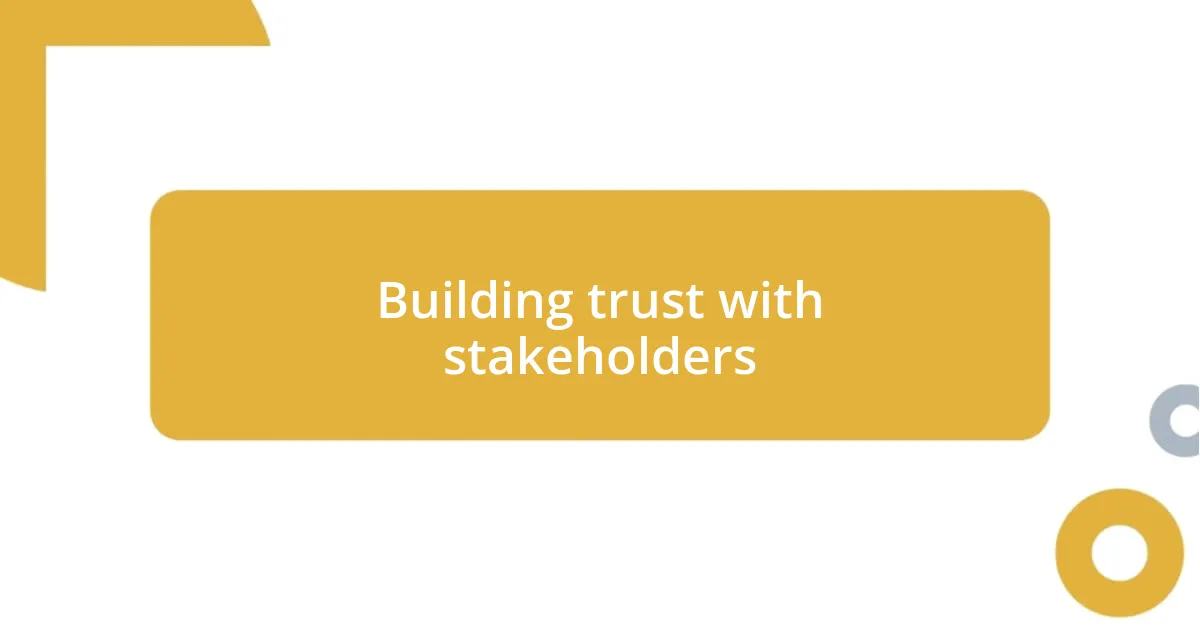
Building trust with stakeholders
Building trust with stakeholders requires consistent effort and genuine interaction. I recall a time when I felt immense tension with a key stakeholder during negotiations. To break the ice, I invited them for a casual coffee. This simple act shifted our dynamics; I listened to their concerns in a relaxed setting, which fostered an environment of openness. Suddenly, the dialogue transformed from confrontational to collaborative, allowing us to co-create solutions that we both felt good about.
Here are some practical approaches I’ve found effective in building trust:
- Be Transparent: Share both successes and setbacks candidly. When I was upfront about the project’s delays, it helped stakeholders feel valued and involved, rather than sidelined.
- Show Consistency: Follow through on your promises. If I commit to providing an update by a certain date, I make sure to deliver. This reliability shows that I respect their time and input.
- Encourage Feedback: I often ask for input and genuinely consider it. This not only demonstrates that their opinion matters but also leads to richer, more informed decisions.
- Celebrate Wins Together: I’ve learned that acknowledging achievements, no matter how small, can solidify bonds. Sharing a victory email after a project milestone helped everyone feel like part of the team.
- Practice Empathy: Understanding the challenges stakeholders face has deepened my relationships. When I empathized with their pressures, it opened doors for candid conversations about our objectives.
Trust isn’t built overnight; it’s a gradual process. I’ve seen firsthand how these small, intentional actions can lead to stronger partnerships, making complex projects more manageable and enjoyable as we work towards common goals.
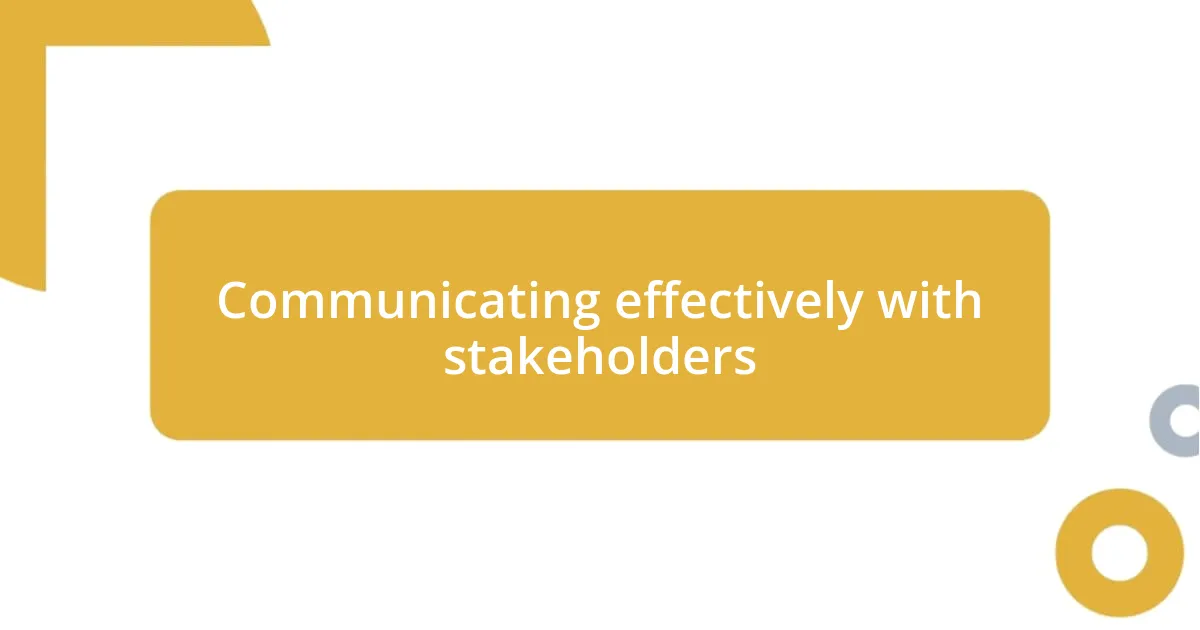
Communicating effectively with stakeholders
Effective communication with stakeholders isn’t just about conveying information—it’s about fostering genuine connections. I remember one project where I organized weekly check-in calls with stakeholders to keep everyone in the loop. It felt a bit excessive at first, but these sessions transformed the way we collaborated. Not only did it create a platform for feedback, but it also fostered a sense of community. Who doesn’t appreciate feeling in the know?
As I began to embrace a two-way communication style, something interesting happened. I started actively listening instead of just presenting. During one of our calls, a stakeholder shared a surprising insight that shifted our approach entirely. Their candidness reminded me that everyone involved brings unique value—and it’s crucial to tap into that. Have you ever thought about how missed opportunities lurk in unanswered emails? Keeping lines of communication open is vital.
Ultimately, I’ve found that clear and concise updates are key. One method I’ve adopted is to send out brief summaries after meetings, highlighting key decisions, action items, and next steps. This reinforces accountability and ensures everyone knows what’s expected. I still reflect on how a simple, clearly communicated message can alleviate confusion, leading to smoother project execution. Effective communication really is an art that requires patience, practice, and intention.
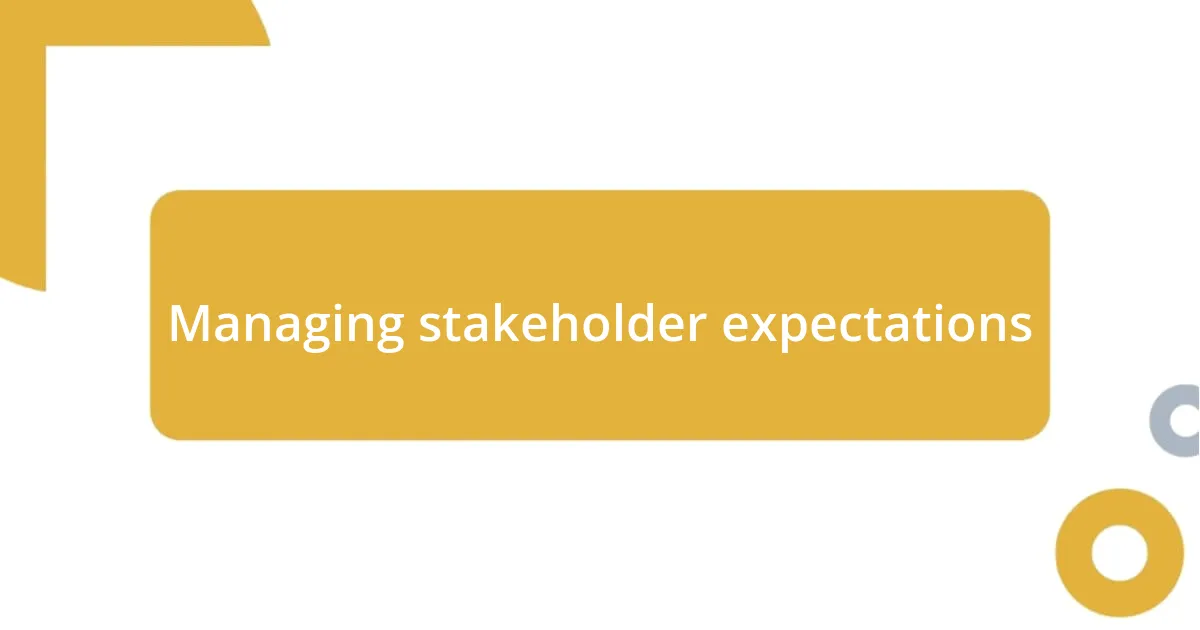
Managing stakeholder expectations
Managing stakeholder expectations can feel like walking a tightrope sometimes. I remember a particular project where misaligned expectations led to friction among the team. To address this, I decided to create a detailed project timeline that I shared with all stakeholders. This simple act was a game changer; it helped everyone visualize the process and understand where we were heading. Have you ever felt the relief that comes from clarity in chaotic situations? It’s incredible how alignment can foster trust and minimize misunderstandings.
Another approach I found effective was to set realistic goals together. I recall sitting down with a group of stakeholders and openly discussing their aspirations and concerns. It was enlightening. We noted their goals and then mapped them against what was practically achievable within our resources and timeline. This not only managed their expectations but also instilled a sense of shared ownership. I often ask myself, how often do we rush into commitments without checking in with the reality of our limitations? Taking the time to have those conversations can pave the way for more feasible outcomes.
Lastly, it’s crucial to not just manage expectations, but also adjust them as the project evolves. There was a situation where an unforeseen obstacle arose, and the initial timeline was at stake. Rather than shy away from the difficult conversation, I chose to be upfront. I communicated the issue transparently and provided a revised timeline. I still remember the relief on their faces when I explained the rationale behind the changes. Trust me, being proactive about changes fosters resilience in relationships. It’s a valuable lesson: engaging stakeholders throughout the journey keeps them informed and reinforces a collaborative spirit.
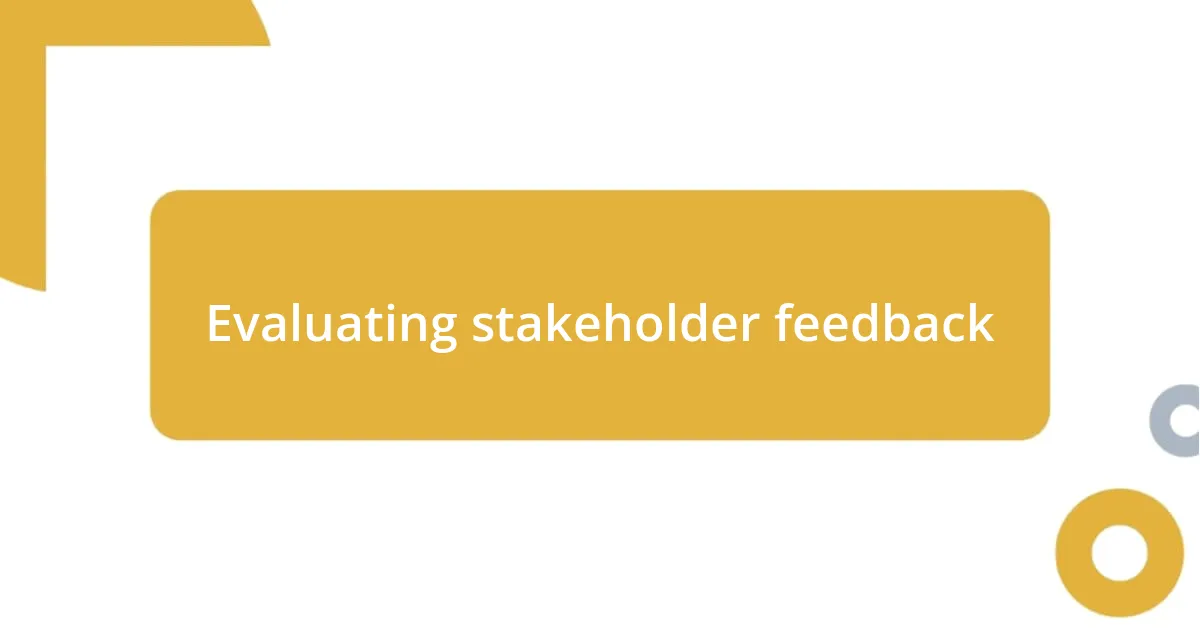
Evaluating stakeholder feedback
Evaluating stakeholder feedback is a critical aspect of collaboration that can significantly influence project outcomes. I recall a situation during a product launch where we gathered feedback through surveys and informal discussions. Initially, some stakeholders expressed frustration with aspects that we thought were well-received. Their candid feedback felt uncomfortable at first, but it pushed us to rethink our approach. Isn’t it fascinating how constructive criticism can open doors to improvement?
Once I had collected the feedback, I made it a point to categorize and analyze it meticulously. I found that certain themes consistently emerged, pointing to common concerns and suggestions. Sharing this analysis with stakeholders not only validated their input but also made them feel valued. It’s amazing how actively demonstrating that you take feedback seriously can strengthen relationships. Have you ever experienced the transformation that happens when stakeholders see their ideas reflected in the project direction?
Acting on feedback is where the real magic happens. After discussing the insights with the team, we implemented changes that directly addressed stakeholder concerns. I vividly remember the moment we presented the revised strategy. The relief and enthusiasm in the room were palpable. They appreciated that we listened and cared enough to adapt. This experience taught me that evaluating stakeholder feedback isn’t just a checkbox; it’s a powerful tool for continuous improvement and collaboration. Wouldn’t you agree that feedback is a gift we learn to unwrap together?
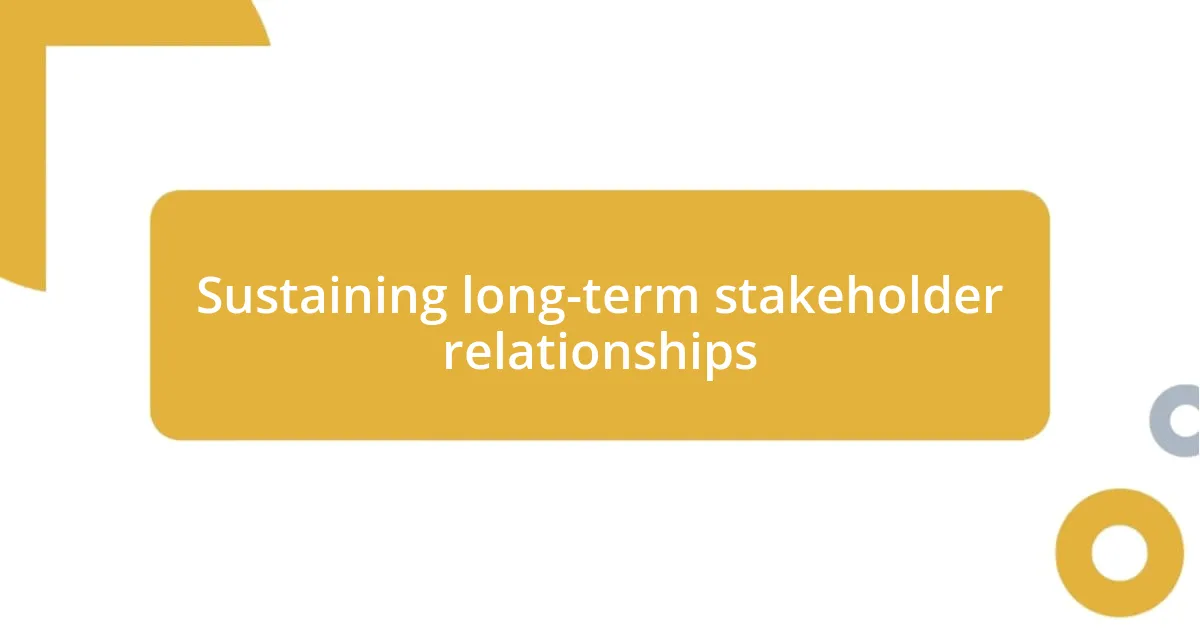
Sustaining long-term stakeholder relationships
Sustaining long-term relationships with stakeholders requires ongoing engagement, which can sometimes feel like a dance. I recall a project where, after the initial excitement faded, stakeholders began to disengage. To reignite that spark, I organized regular check-ins, not just to provide updates but to genuinely ask for their input on direction and execution. This simple gesture transformed our interactions from transactional to truly collaborative. Have you ever noticed how a small effort in communication can boost commitment?
In my experience, transparency is another cornerstone of sustaining relationships. I remember facing an unexpected setback during a critical phase. Rather than shielding stakeholders from the reality, I brought them into the fold. Sharing the obstacles and inviting them to brainstorm solutions fostered a sense of partnership. As we navigated through the challenge together, I could see trust deepen. Don’t you think vulnerability in leadership can strengthen bonds?
Moreover, celebrating successes together is essential. After a milestone completion, I made a point to acknowledge everyone’s contribution during our team meetings. I can still recall the smiles and camaraderie that filled the room; it was a reminder that recognition fuels motivation. Isn’t it incredible how communal celebrations can bind a team? Sustaining stakeholder relationships is all about creating shared experiences that inspire loyalty and enthusiasm.







